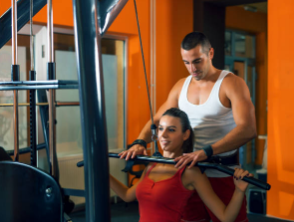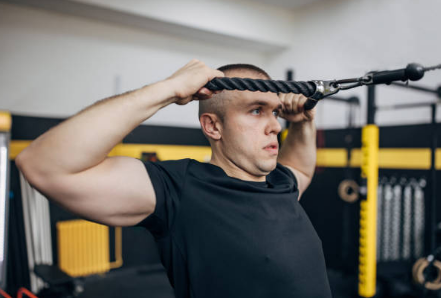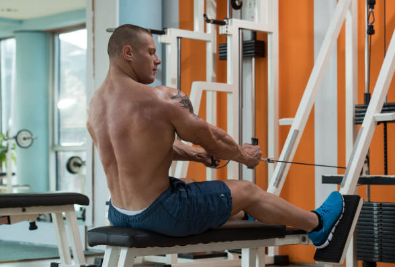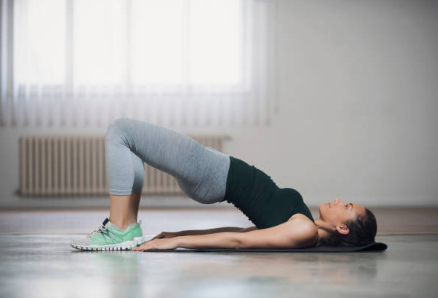Looking to build a stronger, wider, and more defined back? Cable exercises are one of the most effective and versatile tools for targeting every area of your back from lats to traps. Whether you’re training at home or in the gym, cable machines offer constant tension, smoother resistance and endless variation. In this guide, we’ll break down the top back cable exercises, form tips and a sample routine to elevate your results.
Why Focus on Cable Exercises for the Back?
Back cable workouts deliver:
- Constant Tension: Cables maintain tension throughout the range of motion, maximizing muscle engagement.
- Versatility: Adjustable pulley systems enable multiple angles and grips.
- Lower Injury Risk: Smooth resistance paths reduce stress on joints compared to heavy free weights.
- Accessibility: Ideal for home gym setups with cable towers or pulley attachments.
These benefits help build muscle thickness, enhance postural strength, and improve daily performance.
Top Cable Exercises for Back Development (Expanded)
1. Seated Cable Row

Muscles Worked: Middle back (rhomboids, traps), lats, biceps
Difficulty: Beginner to Intermediate
Equipment: Seated cable row machine, V-bar or wide-grip handle
How to Perform:
- Sit down with knees slightly bent and feet placed firmly on the platform.
- Grab the handle with both hands using a neutral grip (palms facing each other).
- Maintain a straight spine and engage your core. Keep your chest lifted.
- Begin by pulling the handle toward your torso by retracting your shoulder blades.
- Continue the pull by bending the elbows, bringing them just past your sides.
- Squeeze your back muscles at the peak contraction.
- Slowly return to the starting position, fully extending your arms.
Benefits:
- Improves posture by strengthening the spinal stabilizers.
- Enhances thickness of the mid-back.
- Great for beginners learning proper scapular retraction.
Common Mistakes:
- Leaning too far back or using momentum.
- Rounding the shoulders at the end of the pull.
- Letting the weight stack slam down.
Variations:
- Wide grip for more upper back emphasis.
- Underhand grip to recruit more lower lats and biceps.
2. Lat Pulldown (Wide Grip)

Muscles Worked: Latissimus dorsi, rear deltoids, rhomboids
Difficulty: Beginner to Intermediate
Equipment: Lat pulldown machine with wide bar
How to Perform:
- Sit with your thighs secured under the pad and adjust the weight.
- Grasp the bar with a wide overhand grip, wider than shoulder-width.
- Lean back slightly, keeping your chest up and spine neutral.
- Pull the bar down toward your chest by driving your elbows down and back.
- Stop when the bar is just above your chest and squeeze your lats.
- Slowly return the bar to the top with control.
Benefits:
- Builds the classic V-tapered back.
- Excellent for isolating and fully engaging the lats.
- Safer than pull-ups for beginners and those with shoulder issues.
Common Mistakes:
- Pulling the bar behind the neck (risks shoulder injury).
- Using momentum or swinging.
- Letting elbows drift forward.
Variations:
- Close grip for lower lat focus.
- Reverse grip for biceps and inner lats activation.
- Behind-the-neck pulldowns (advanced; not recommended for all).
3. Straight-Arm Cable Pulldown

Muscles Worked: Lats, teres major, triceps (long head), core
Difficulty: Intermediate
Equipment: High pulley cable with straight bar or rope
How to Perform:
- Stand facing the machine with feet shoulder-width apart.
- Grab the straight bar overhead with a shoulder-width grip.
- With arms straight, pull the bar downward in a semicircular arc until it reaches your thighs.
- Keep a slight bend in your elbows throughout—no flexion.
- Pause and squeeze your lats at the bottom.
- Slowly allow the bar to rise back to the start, maintaining tension.
Benefits:
- Excellent for isolating the lats without biceps interference.
- Improves mind-muscle connection.
- Ideal as a pre-activation move or burnout finisher.
Common Mistakes:
- Bending arms and turning it into a triceps exercise.
- Letting the bar swing or using jerky motions.
- Leaning too far forward or backward.
Variations:
- Use rope for a wider range of motion at the bottom.
- Perform kneeling for better isolation and stability.
4. Single-Arm Standing Cable Row

Muscles Worked: Lats, rhomboids, core, biceps
Difficulty: Intermediate
Equipment: Adjustable cable pulley with single D-handle
How to Perform:
- Adjust the pulley to chest or shoulder height.
- Stand with a staggered stance, holding the handle in one hand.
- Brace your core and pull the handle toward your side, keeping your elbow close to your body.
- At peak contraction, pause and squeeze your lat and scapula.
- Slowly extend your arm, resisting the weight on the way back.
Benefits:
- Corrects muscle imbalances.
- Engages core stabilizers more than bilateral rows.
- Improves grip and unilateral strength.
Common Mistakes:
- Rotating the torso to assist the pull.
- Not controlling the eccentric (return) phase.
- Flaring the elbow away from the body.
Variations:
- Seated version for more strict form.
- Low pulley version for vertical emphasis.
5. Cable Face Pull

Muscles Worked: Rear deltoids, traps, rhomboids, rotator cuff
Difficulty: All levels
Equipment: High pulley cable with rope attachment
How to Perform:
- Set the pulley at upper chest or eye level.
- Hold the ends of the rope with a neutral grip, step back for tension.
- Pull the rope toward your face, flaring your elbows and externally rotating your shoulders.
- At full contraction, your thumbs should be near your ears.
- Hold briefly, then return slowly to the starting position.
Benefits:
- Improves posture and shoulder stability.
- Crucial for balancing out pressing movements.
- Prevents shoulder injuries by targeting stabilizing muscles.
Common Mistakes:
- Pulling with the biceps instead of the rear delts.
- Using too much weight and losing form.
- Not maintaining external rotation.
Variations:
- Kneeling face pulls for more stability.
- One-arm version for targeted control.
6. Cable Dead Stop Row

Muscles Worked: Lats, mid traps, rhomboids, forearms
Difficulty: Intermediate to Advanced
Equipment: Seated cable row or low pulley, any handle
How to Perform:
- Sit on a bench or use a low pulley with the cable fully slack at start.
- Every rep should begin from a dead stop—no pre-tension.
- Pull the handle toward your waist by initiating with scapular retraction, then driving elbows back.
- Pause briefly at the top, squeezing your lats.
- Lower the weight under control until the plates return to rest.
Benefits:
- Builds explosive power and control.
- Removes momentum, forcing full muscular activation.
- Excellent for strength athletes and bodybuilders alike.
Common Mistakes:
- Failing to fully pause at bottom between reps.
- Using jerky movements to start the pull.
- Overextending at the back.
Variations:
- Barbell dead stop rows for compound focus.
- High pulley version for upper trap emphasis.
Sample 4-Week Back Cable Workout Program
| Week | Day 1 | Day 2 | Tempo | Reps | Rest |
|---|---|---|---|---|---|
| 1 | Lat Pulldown + Seated Row | Straight-Arm Pulldown + Single-Arm Row | 2‑0‑2 | 8–12 | 60–90s |
| 2 | Add one set each + Face Pull | Increase weight moderately | 2‑0‑2 | 6–10 | — |
| 3 | Cable Dead Stop Row replaces one exercise | Increase intensity | 3‑1‑3 | 6–8 | 90s |
| 4 | Max Hypertrophy: 4× per session | Mixed tempos: drop‑sets | Vary | 8–15 | 45–75s |
- Warm-up: 5 minutes cardio + 1 set warm-up each movement.
- Tempo insight: 2‑0‑2 = 2 seconds eccentric, no pause, 2 seconds concentric.
- Progressive overload: Increase resistance or reps weekly.
- Week 4 drop‑sets: Do 8 reps, reduce weight 20%, 8 more reps.
Key Form Tips for Cable Back Exercises
- Mind-Muscle Connection: Visualize and feel the engaged muscles.
- Controlled Movements: No swinging or jerking; slow and steady wins.
- Postural Control: Preserve neutral spine, retracted shoulders.
- Full Range of Motion: Extend fully and contract completely.
- Grip Variety Matters: Mix wide, neutral, underhand for full lat activation.
Complementary Tips for Maximum Gains
- Stay Consistent: Stick to the program with 48–72 hour rest between sessions.
- Nutrition & Recovery: Support muscle repair with protein, sleep 7–9 hours, and hydrate.
- Maintain Tight Core: Supports lower back and overall posture.
- Blend with Free Weights: Add t-bar rows or deadlifts for power and mass.
- Joint Care: Prehab with light rotator cuff work and post-session stretching.
More Workout For Back
Ultimate Back Wings Exercise Guide
Ultimate Back Workouts on a Pull-Up Bar


